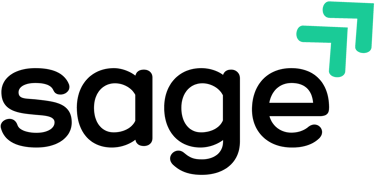AI at the Board Table: Navigating Risk with Maturity, Not Mayhem
As artificial intelligence reshapes the global business landscape, boards face a critical inflection point. This article helps Board Chairs and Lead Independent Directors go beyond buzzwords and headlines to cultivate AI risk oversight that is principled, proactive, and practical. With a focus on governance maturity, strategic vigilance, and ethical responsibility, it guides seasoned directors through the real work of AI risk management—before risk becomes regret.


AI at the Board Table: Navigating Risk with Maturity, Not Mayhem
Artificial intelligence didn’t knock politely at the boardroom door—it burst through it. One moment, AI was a technical frontier for CIOs and R&D labs. The next, it’s on your agenda as a strategic imperative, regulatory minefield, reputational risk, and culture disruptor—all at once.
For Board Chairs and Lead Independent Directors, the rise of AI presents a new class of governance challenge. Not because the board is unqualified to oversee it—but because traditional board reflexes don’t map cleanly to the shape of this risk. AI evolves fast, crosses domains, and amplifies both opportunity and exposure at once. And perhaps most dangerously—it often sounds more magical than it is, and more benign than it may be.
So how should board leaders step into this moment? Not with panic or passivity. But with presence, poise, and purpose.
Let’s unpack what AI risk oversight really means in practice—and how boards can do it well.
Don’t Delegate the Dilemma: AI Is a Board-Level Risk
One of the most common early mistakes is to treat AI like a technical issue and hand it off to management. “This is an IT decision.” “Legal is watching this.” “Our innovation team has it covered.”
But AI is not just a tool. It’s a system that influences decisions, behaviors, and outcomes across your organization. It touches brand trust, customer equity, workforce integrity, competitive strategy, and regulatory compliance.
If your board is delegating AI oversight without direction, it’s not managing risk—it’s outsourcing judgment.
As Chair or Lead Director, your job is not to become an AI expert. Your job is to ensure the board has enough fluency to ask the right questions, interpret the answers, and pressure-test the governance behind the gloss.
Because AI doesn’t just raise questions about what your company is doing. It raises urgent questions about how those decisions are being made, and why.
Governance Maturity Is the Hidden Variable
Many companies are rushing to implement AI without reflecting on whether their governance culture is prepared to manage its risks. But technology doesn’t erase governance gaps—it amplifies them.
If your board lacks psychological safety, directors won’t voice concern about opaque algorithms they don’t fully understand. If your board avoids tension, it won’t surface hard tradeoffs between innovation and ethics. If your board rushes its agenda, it won’t leave time to probe the deeper, systemic implications of deploying AI at scale.
AI risk doesn’t only live in data sets or code. It lives in governance dynamics—how honestly your board can wrestle with uncertainty, how clearly it defines accountability, and how deeply it aligns decisions with purpose.
Your board doesn’t need a new charter to handle AI. It needs to mature.
Build Fluency, Not FOMO
One of the hardest tensions for seasoned directors right now is the knowledge gap. AI moves fast, uses dense language, and often triggers either fear of irrelevance or blind trust in those who claim to “get it.”
As Chair, your role is to help the board build fluency, not to fake expertise. Fluency doesn’t mean understanding the math behind machine learning. It means knowing how to ask questions like:
What decisions is AI making or influencing in our operations?
How is bias being mitigated in our AI systems?
What are the human escalation points when things go wrong?
What risks are amplified by scale or automation?
How do we know what we don’t know?
This is where experiential learning is invaluable. Case studies. Cross-sector panels. Sandbox scenarios. The more tangible the learning, the more confident and curious your board becomes.
Boards don’t have to know everything. But they can’t afford to ask nothing.
From Risk Register to Ethical Reckoning
Boards are familiar with operational risk. They track cybersecurity, financial controls, legal compliance. But AI introduces a different kind of risk—one that’s harder to measure, and easier to rationalize.
It’s the risk of eroding trust by automating human judgment. The risk of accidental harm to vulnerable populations. The risk of deploying systems that work perfectly but make decisions that feel profoundly wrong.
These aren’t abstract fears—they’re governance failures in waiting.
That’s why AI oversight must include ethical scrutiny. What values are embedded in the models? Who decides what “fairness” looks like? Are we clear on how our AI use aligns—or collides—with our purpose?
As Chair, this is your lane. Not because you’re the ethics police. But because your job is to center purpose in moments of complexity.
When boards avoid these questions, they don’t just fail to manage risk. They fail to lead.
Oversee the Process, Not Just the Output
In AI governance, it’s tempting to focus on outcomes. Did the tool work? Were the numbers accurate? Is the model generating ROI?
But this is misleading. Many AI systems perform well—and still do harm.
Boards must ask about process integrity. How was the model trained? What data was used—and was it consented? How are errors detected and corrected? Who owns the system after deployment?
It’s not enough to oversee the product. You must govern the pipeline—from ideation through iteration.
And that oversight must be layered. Policy frameworks. Ethical review mechanisms. Red-teaming and stress tests. Role clarity between tech, legal, and operations.
Because once AI is embedded, it’s hard to unwind. Oversight isn’t about saying yes or no—it’s about shaping the conditions before the answer is inevitable.
AI Risk Is Also a Talent and Culture Risk
Boards often miss a crucial AI risk: what it does to people.
When AI tools reshape jobs, alter workflows, or change the pace of decision-making, they impact culture. They create fear, confusion, and sometimes deep resentment—especially when change is opaque or top-down.
Employees worry they’ll be replaced. Customers fear being dehumanized. Managers struggle to adapt.
As Chair or Lead Director, your oversight must include these human dynamics. How is AI impacting morale? Where are the communication gaps? Are reskilling efforts adequate—or performative?
If AI is deployed without cultural readiness, resistance will quietly sabotage results. Risk isn’t just in the system—it’s in the silence.
Crisis-Proofing the Board Before the Headlines Hit
Here’s the uncomfortable truth: AI failure is often reputational, not technical. It doesn’t take a breach or malfunction to cause damage. All it takes is a screenshot—of a biased output, a discriminatory result, or a cold response to a vulnerable user.
And when that happens, the question isn’t whether the board approved the model. It’s whether the board governed the climate that let the model launch unchallenged.
Boards that are crisis-ready take AI risk seriously before the world notices. They ask for pre-mortems, not just post-mortems. They oversee communication plans. They ensure there’s leadership capacity to pause deployment when the gut says wait.
Because with AI, the board’s credibility is always on the line—even if it wasn’t in the code.
Governance Is Your Edge
In a moment when companies are sprinting toward AI, mature governance is a strategic edge. It won’t move you faster—but it will move you better.
And that’s your role as Chair or Lead Director: not to chase hype or block innovation, but to hold space for decisions that reflect the kind of organization you want to be.
Because the future of AI isn’t just about capability. It’s about character.
And the board table is where that future takes shape.
AI is a governance challenge. Lead it with intention.
📧 Contact our team at info@sagesims.com
📅 Schedule a no-cost board strategy session at https://sagesims.com/connect
🔍 Learn more at https://sagesims.com
